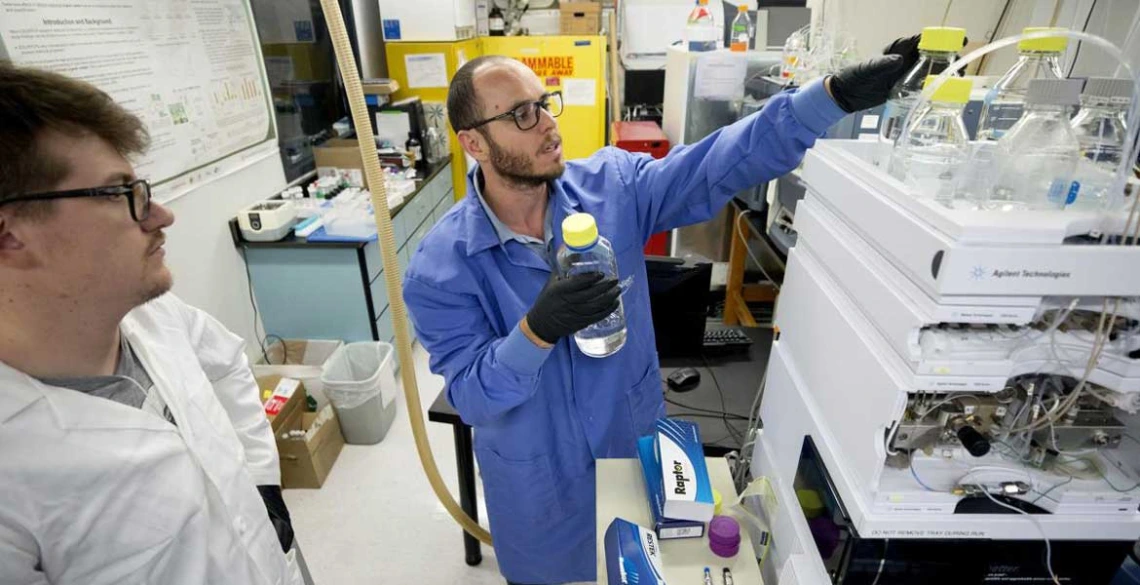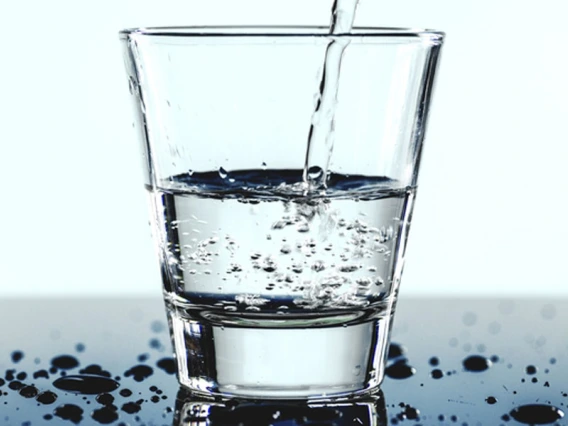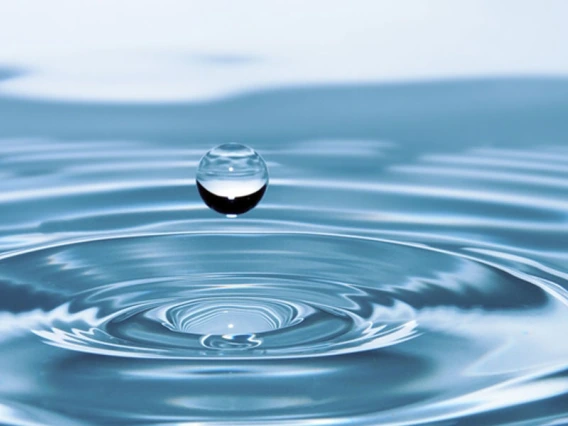UA Team Working on New Method to Remove PFAS Contaminants From Water
Chemical engineers and water scientists tackle a public health issue that hits close to home.

Yaniv Olshansky, a postdoctoral research associate at the University of Arizona, center, and Anton Gomeniuc, a senior in chemical engineering, prepare water samples for testing as they seek a new method to remove PFAS contaminants from water. (Photo: Mamta Popat / Arizona Daily Star)
In September 2018, Tucson Water realized it had been sending water with PFAS pollutants in it to thousands of customers. The utility started work to correct the problem, but perfluorinated chemicals are not easy to remove.
Now, Reyes Sierra, a chemical and environmental engineering professor at the University of Arizona, is leading a team of scientists to develop a more efficient adsorbent material to filter out PFAS chemicals from water.
The pollutants have become the subject of local and national concern this year as they’ve been discovered in drinking wells around the country, including in Tucson and Marana.
These PFAS compounds repel water and oil, and were once popular in everything from nonstick frying pans to firefighting foam. They tend to accumulate in the bodies of animals and people, and recent research has linked PFAS compounds to a number of diseases.
“The conventional methods (to remove PFAS from water) are very expensive because these chemicals are so very difficult to treat,” Sierra said. “We decided to work on this because there’s a need for new methods, and we have the expertise and interest in this type of work.”



